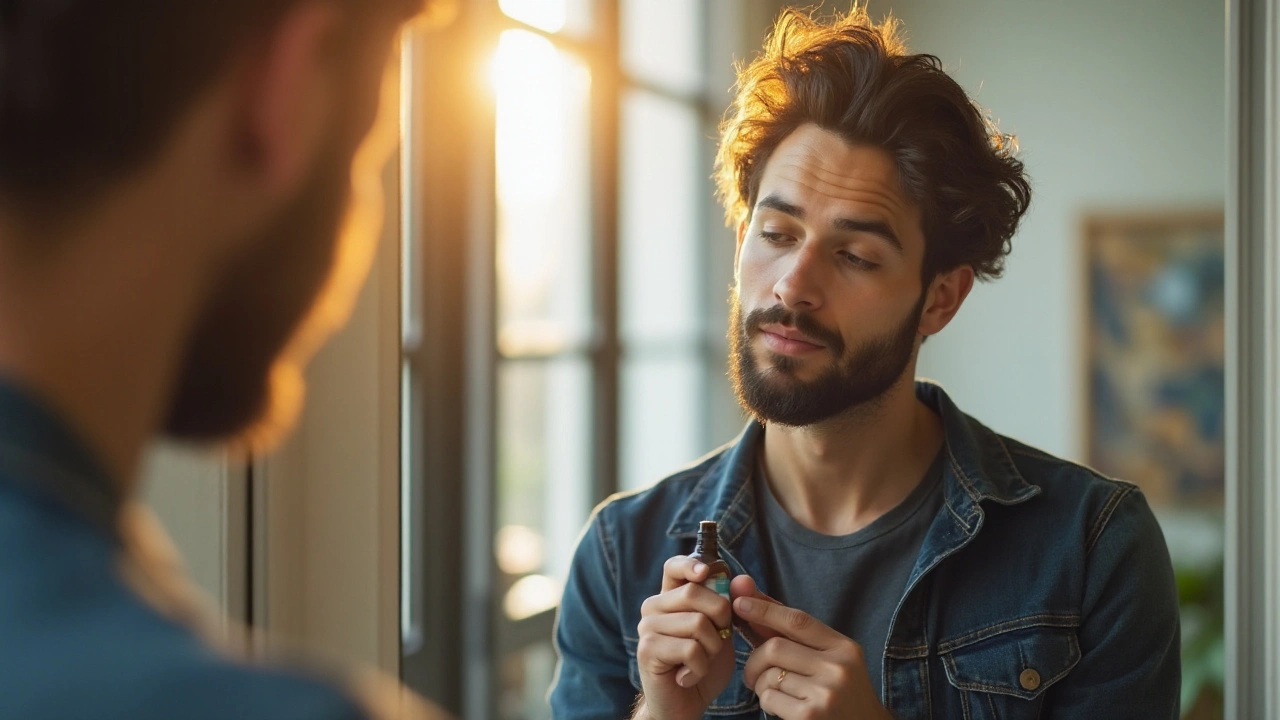- Is NorthwestPharmacy.com Legit? Detailed 2024 Review on Licensing, Customer Reviews & Refunds May 19, 2025
- Rasagiline History: Discovery, Development & FDA Approval Oct 23, 2025
- Metronidazole Side Effect Remedies & Flagyl Alternatives: Practical Tips that Work May 3, 2025
- 8 Game-Changing Alternatives to Doxazosin in 2025 Apr 8, 2025
- Legionnaires' Disease and Dental Facilities: What You Need to Know Nov 18, 2025
Minoxidil – What You Need to Know Before You Start
If you’ve tried comb‑overs or shampoos that promise miracles and nothing changed, you’ve probably heard of Minoxidil. It’s the only over‑the‑counter drug that actually has FDA approval for pattern hair loss in both men and women. In this guide we’ll break down how it works, who should use it, how to apply it right, and what side effects you might see.
How Minoxidil Grows Hair
Minoxidil started out as a blood‑pressure pill. Researchers noticed that patients on the drug grew extra hair, so they turned it into a topical solution. The exact mechanism isn’t fully understood, but it widens blood vessels in the scalp, improves blood flow, and may prolong the growth phase of hair follicles. The result is finer, thicker hair that can fill in thinning spots.
Who Can Benefit?
Minoxidil works best for early‑stage thinning. If you’re losing hair in the crown or along the hairline and you still have visible follicles, give it a try. Men typically use a 5% solution, while women start with 2% to reduce irritation. If you have a scarred scalp or total baldness in an area, Minoxidil won’t revive dead follicles.
How to Apply – Step by Step
1. Start with dry, clean scalp. No need to wash right before; just make sure the area is free of oil and product.
2. Measure the right dose. For 5% solution, that’s 1 ml (about 20 drops) once a day for women, twice for men. If you use foam, a half‑capful per application works.
3. Spread the solution evenly over the thinning area. Use your fingertips to massage gently for 30 seconds – this helps the product reach the follicles.
4. Let it dry completely before putting on a hat or going to bed. This usually takes 2‑4 minutes.
5. Wash your hands right after to avoid accidental contact with other skin.
Patience is key. Most people notice a reduction in shedding after 2‑3 months, and visible regrowth typically starts around 4‑6 months. Keep using it continuously; if you stop, any new hair will fall out within a few weeks.
Common Side Effects and How to Deal With Them
Scalp irritation, itching, or a mild burning sensation are the most reported issues. If the irritation is severe, try the 2% formula, reduce frequency, or apply a gentle moisturizer after the solution dries. Rarely, people get unwanted facial hair growth. In that case, limit application to the scalp and avoid spreading the product elsewhere.
Systemic side effects like dizziness or rapid heartbeat are extremely uncommon with topical use, but if you feel anything beyond scalp irritation, stop using it and talk to a pharmacist or doctor.
Combining Minoxidil with Other Treatments
Many users pair Minoxidil with oral finasteride (for men) or low‑level laser therapy for extra boost. If you’re already on another hair‑loss product, check with a professional to avoid over‑stimulation. Our tag also includes a post about Proscalpin, another hair‑loss solution that works differently. Reading that article can help you compare options.
Bottom line: Minoxidil is a simple, affordable way to fight early hair thinning. Follow the application steps, stay consistent, and monitor any irritation. If you’re patient and use it correctly, you’ll likely see thicker hair within a few months. Ready to give it a shot? Grab the 5% solution for men or the 2% for women, and start the routine today.
Top Propecia Alternatives for Hair Loss in 2024
- Elara Huxleigh
- Oct 23, 2024
In 2024, the landscape of hair loss treatments presents several effective alternatives to Propecia. These options range from over-the-counter solutions like Minoxidil to prescription medications like Dutasteride, and extend to innovative approaches like Low-Level Laser Therapy and PRP Therapy. Each alternative comes with its own set of benefits and potential drawbacks, highlighting the importance of choosing the right method tailored to individual needs and conditions. Exploring these options can provide new avenues for combating hair thinning and restoring confidence.
